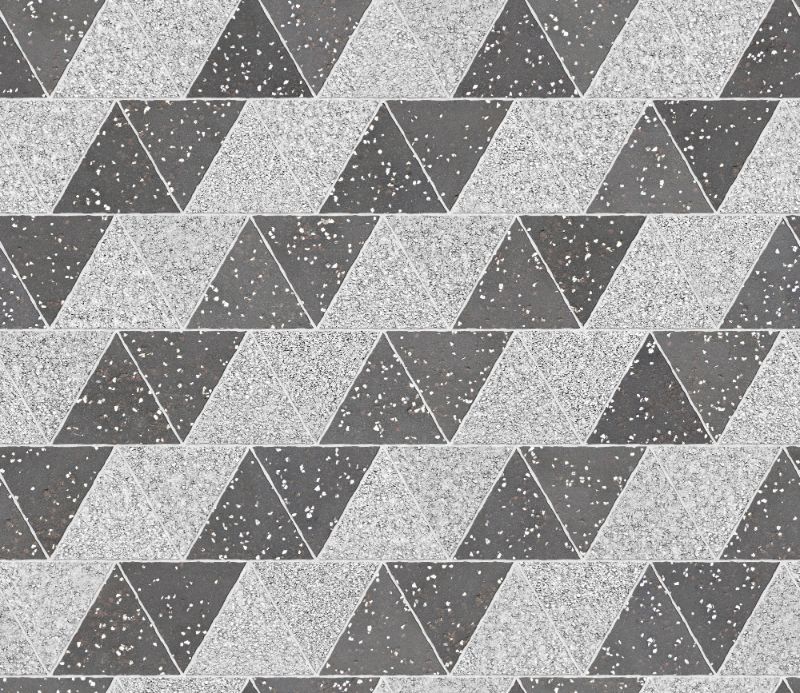Crushed Stone Asphalt Staggered Isosceles
Category
Landscaping
Download
Edit
A cost effective, highly durable and weather-sealed surface used almost exclusively in engineering projects, aggregate asphalt is renowned for its grip, extremely hard-wearing nature and heavy load-bearing qualities. A derivative of Tarmacadam, an innovation of the compacted stone Macadam surfaces invented in the 1820s by Scottish engineer John McAdam to provide a smooth, easy to construct paving surface, Welsh engineer Edgar Hooley added tar to seal the roads when laying, to prevent wear and dust. As motor cars became more common, it was imperative to provide a surface which could simultaneously withstand sustained, heavy use while remaining smooth to prevent puncturing tyres. With the growth in use of oil, bitumen, a naturally occurring byeproduct of oil, replaced tar to seal the surface. Combining layers of compacted mineral aggregate particles with the bitumen binds and waterproofs the surface, binding together more solidly over time. Higher quality grades of aggregate typically translate to longer lasting surfaces with less road noise than cheaper, poorer surfaces, while increasing grip, breaking efficiency and safety for foot and vehicular traffic and reducing tyre wear. Asphalt can also be easily recycled, redeployed in new paving and roads.
This particular aggregate asphalt has a mixture of small sized white, silver and auburn coloured aggregate chips laid with a medium spread and density, compacted into a dark grey bituminous layer and is commonly used on newly laid pavements and roads.
A seamless landscaping texture with crushed stone asphalt arranged in a staggered isosceles pattern. Seamless textures can be tiled repeatedly across a surface without visible seams making them useful for architectural drawings and 3D models. This image can be used as a SketchUp texture, Revit material or imported into Photoshop for use in 2D illustrations. A high resolution version of this texture is available, as well as CAD hatches and PBR maps with Architextures Pro.

